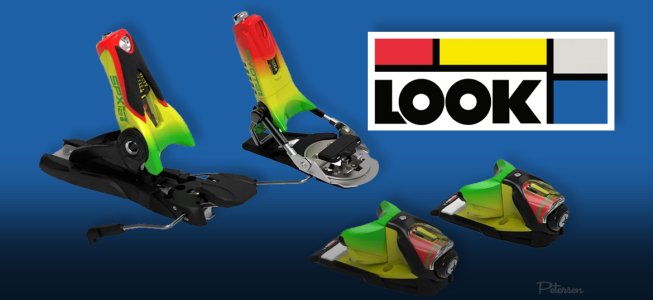Sacrilege, right!?! All over the actual and virtual ski worlds, the Look Pivot is the be all and end all of ski bindings. There is no question the Look Pivot has one of the most loyal followings of any product on the market, it is one of the few products that, if a shop does not carry the Pivot, a customer will walk out but I am here to tell you, there is a substitute, the SPX 12. But unlike the Mazda Miata (Miata Is Always The Answer) the Pivot is not blessed with such an acronym. Therefore, it cannot always be the answer. Let us go line-by-line why, for the everyday skier, the SPX 12 is indeed a viable option over the storied Pivot 12.
- Ease of entry and exit. The Pivot can be quirky to get in and out of. The SPX 12 is much easier than the quirky Pivot's heel that can move around while getting in and often has to be reset after getting out.
- Speaking of getting out. The soft plastic of the Pivot heel (especially in colors other than black) can get more chewed up than a rib bone in the presence of a Rottweiler puppy. The SPX 12 has a nice metal cup embedded in the heel where your pole can release the heel with no damage.
- Adjustment range. The Pivot has about 8 mm of range and the SPX has over 20 mm, so if you are in the market for a possible different size boot, you may will be looking at a remount with the Pivot, but not with the SPX 12.
- Race bred. If you are in the camp where racing pedigree is the final word in a product's performance, the Pivot hasn’t been used in racing in about 25 years. What binding replaced it and what binding does every Rossignol, Dynastar and some RedBull Van Deer athletes use? I will give you a hint: “Espee-ex. “
- Brake options. Where we have a good range of brake options on the Pivot, there isn't really a good brake width for 80-90 mm wide skis, the SPX does offer a 90 mm brake.
- Speaking of brakes. The angled brake arm of the SPX retracts higher out of the way and less chance of getting caught on high edge angles or landing switch.
- Price/value. When they say it’s not about the money, it means that it is usually about the money. The SPX 12 is about $80 less than the Pivot 12. That is not an insignificant amount of change.
Yes the Pivot is a glorious binding worthy of all of the accolades it receives. But for the everyday Joe or Jane skier who might ski less than 20 days a year or does not push the limits, Pivot’s brother the SPX is a better alternative. Sure, you give up the short mount distance and low rotation weight that only the Pivot offers, but are you really going to miss that? In 99% of your skiing, no. The “7 Reasons” I posted above outweigh those two attributes. If you do need them, you will probably be stepping up to the “SkiTalk Derived and Endorsed” Pivot 15 or you can also seek out the Look SPX 12 Rockerace, the race version of the SPX 12. While that binding is designed only to work on Look’s R22 race plate, some have been mounting it flat on regular consumer skis and reaping a bit higher performance than the consumer SPX 12. So when you want a Look but don’t need a Pivot, the SPX is worth a look.
